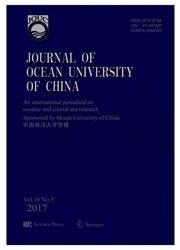

 中文摘要:
中文摘要:
A novel continuous ovary cell line from barfin flounder(Verasper moseri)(BFO cell line) was established with its primitive application in transgenic expression demonstrated in this study. Primarily cultured cells grew well at 22℃ in Dulbecco's modified Eagle medium/F12 medium(DMEM/F12, 1:1; p H 7.2) supplemented with 20% fetal bovine serum(FBS), carboxymethyl chitooligosaccharide, basic fibroblast growth factor(b FGF) and insulin-like growth factor-I(IGF-I). The primary BFO cells in fibroblastic morphology proliferated into a confluent monolayer about 2 weeks later, and were able to be subcultured. Impacts of medium and temperature on the growth of the cells were examined. The optimum growth was found in DMEM/F12 with 20% FBS and at 22℃. The BFO cells can be continuously subcultured to Passage 120 steadily with a population doubling time of 32.7 h at Passage 60. Chromosome analysis revealed that 72% of BFO cells at Passage 60 maintained the normal diploid chromosome number(46) with a normal karyotype of 2st+44t. The results of gene transformation indicated that green fluorescence protein(GFP) positively expressed in these cells after being transformed with pc DNA3.1-GFP. Therefore, a continuous and transformable BFO cell line was successfully established, which may serve as a useful tool for cytotechnological manipulation and transgenic modification of this fish.
 英文摘要:
英文摘要:
A novel continuous ovary cell line from barfin flounder (Verasper moseri) (BFO cell line) was established with its primitive application in transgenic expression demonstrated in this study. Primarily cultured cells grew well at 22A degrees C in Dulbecco's modified Eagle medium/F12 medium (DMEM/F12, 1:1; pH 7.2) supplemented with 20% fetal bovine serum (FBS), carboxymethyl chitooligosaccharide, basic fibroblast growth factor (bFGF) and insulin-like growth factor-I (IGF-I). The primary BFO cells in fibroblastic morphology proliferated into a confluent monolayer about 2 weeks later, and were able to be subcultured. Impacts of medium and temperature on the growth of the cells were examined. The optimum growth was found in DMEM/F12 with 20% FBS and at 22A degrees C. The BFO cells can be continuously subcultured to Passage 120 steadily with a population doubling time of 32.7 h at Passage 60. Chromosome analysis revealed that 72% of BFO cells at Passage 60 maintained the normal diploid chromosome number (46) with a normal karyotype of 2st+44t. The results of gene transformation indicated that green fluorescence protein (GFP) positively expressed in these cells after being transformed with pcDNA3.1-GFP. Therefore, a continuous and transformable BFO cell line was successfully established, which may serve as a useful tool for cytotechnological manipulation and transgenic modification of this fish.
 同期刊论文项目
同期刊论文项目
 同项目期刊论文
同项目期刊论文
 期刊信息
期刊信息
